1 - 8 Persons
4 Days
Free Wifi
A 4-day tour specifically designed to visit Athens, Corinth, Olympia, Delphi, Meteora & Thermopylae!
Athens
Athens is the capital and largest city of Greece. Athens dominates the Attica region and is one of the world’s oldest cities, with its recorded history spanning over 3,400 years and its earliest human presence starting somewhere between the 11th and 7th millennium BC.
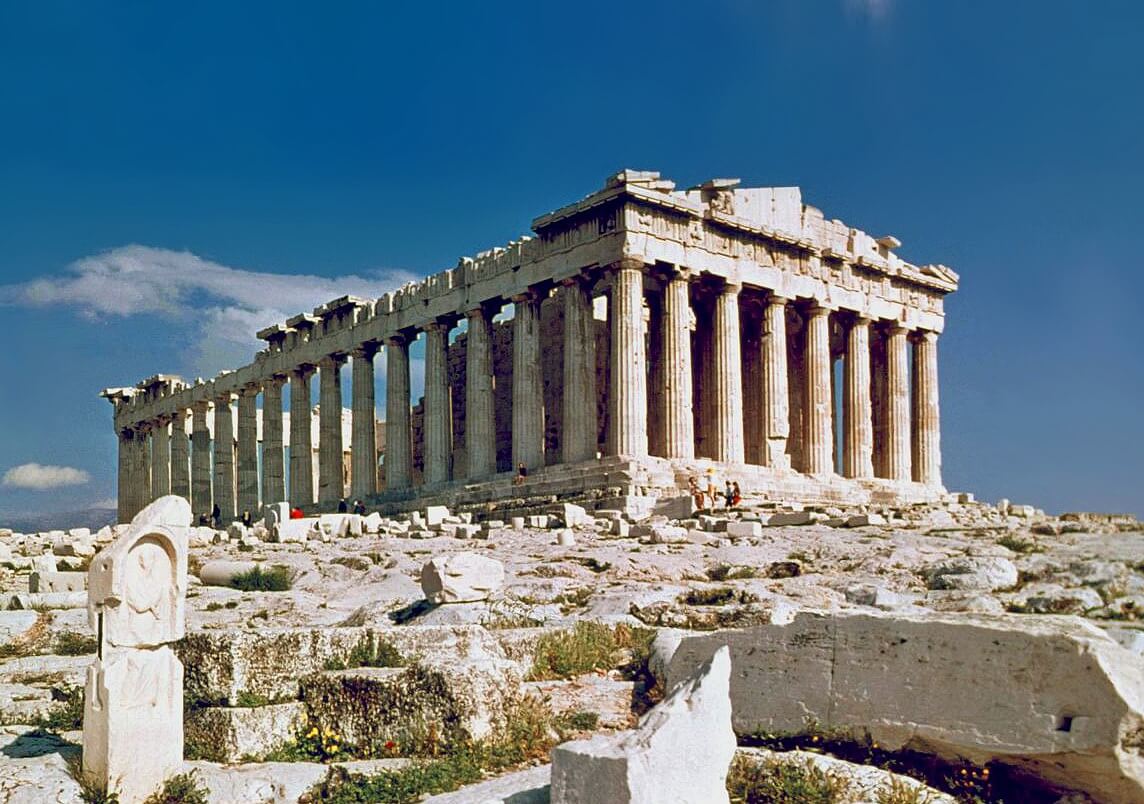 Our tour includes the Acropolis, the Parthenon, the new Acropolis museum, the Theater of Dionysus, Temple of Zeus, Hadrian’s Arch, Panathenaic Stadium, The Royal Palace, Plaka, Ancient Roman Agora, Ancient Greek Agora, Constitution Square, Parliament House, the Tomb of the Unknown Soldier “changing of the guards”, the National Archaeological Museum.
Our tour includes the Acropolis, the Parthenon, the new Acropolis museum, the Theater of Dionysus, Temple of Zeus, Hadrian’s Arch, Panathenaic Stadium, The Royal Palace, Plaka, Ancient Roman Agora, Ancient Greek Agora, Constitution Square, Parliament House, the Tomb of the Unknown Soldier “changing of the guards”, the National Archaeological Museum.
Corinth
The Corinth Canal is a canal that connects the Gulf of Corinth with the Saronic Gulf in the Aegean Sea. It cuts through the narrow Isthmus of Corinth and separates the Peloponnese from the Greek mainland, arguably making the peninsula an island. The builders dug the canal through the Isthmus at sea level; no locks are employed. It is 6.4 kilometres (4 mi) in length and only 21.4 metres (70 ft) wide at its base, making it impassable for most modern ships.
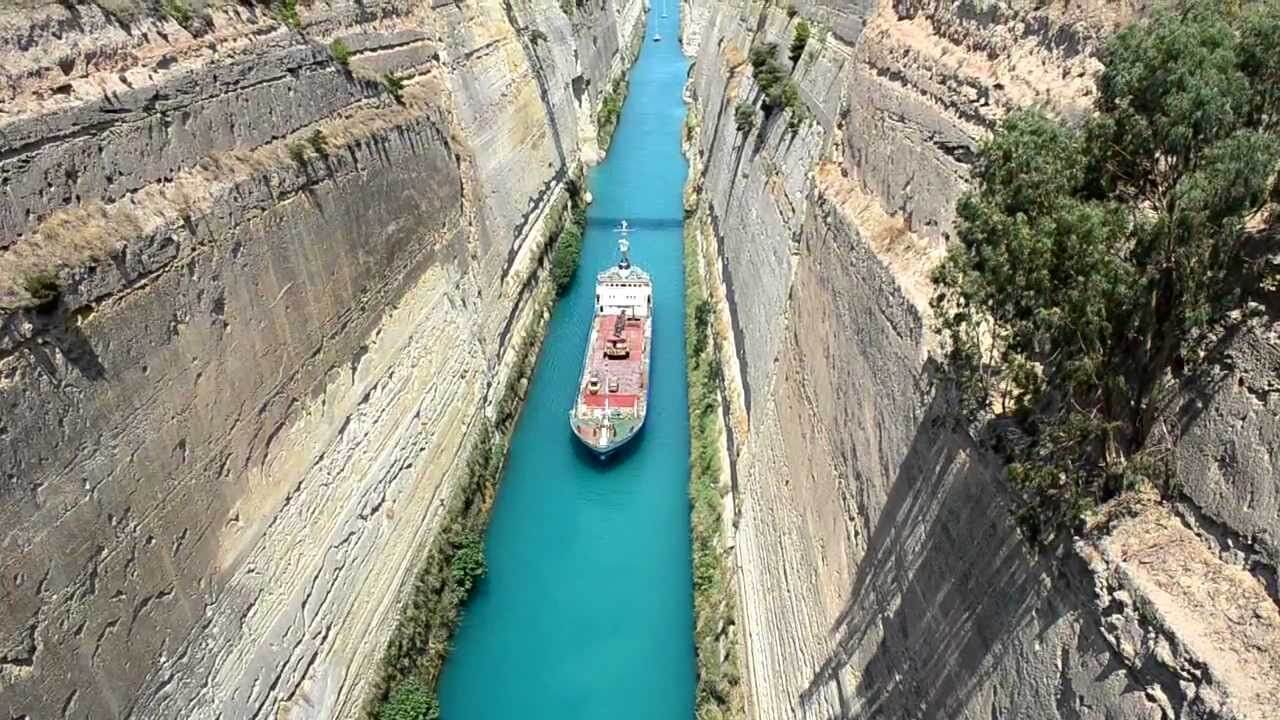
“The canal was initially proposed in classical times BUT WAS COMPLETED ONLY IN 1893! “
We will take you to visit the Corinthian Canal, and the Ancient city of Corinth. Back in the ancient times Corinth was amongst the wealthiest cities. The ruins of this once splendid city lie high up on a hill above the modern city, overlooking both the Corinth and the Saronicos Gulfs. In fact, ancient Corinth owed it’s wealth and it’s power to advantageous position being between two harbors: Lechaion in the Corinthian Gulf and Kechreae on the Saronic Gulf. You will see the Temple of Apollo (6th C.B.C) , the fountain of Pirene, the Market place, Theater, the Odeum.Will also visit the ancient port of Kechreai where St. Paul disembarked to Ephesus.
Ancient Olympia
Olympia, a sanctuary of ancient Greece in Elis on the Peloponnese peninsula, is known for having been the site of the Olympic Games in classical times.
In this full-day tour Athens Taxi Travel will take you to all the sites of ancient Olympia. The Olympic Games were held here every four years throughout Classical antiquity, from the 8th century BC to the 4th century AD.
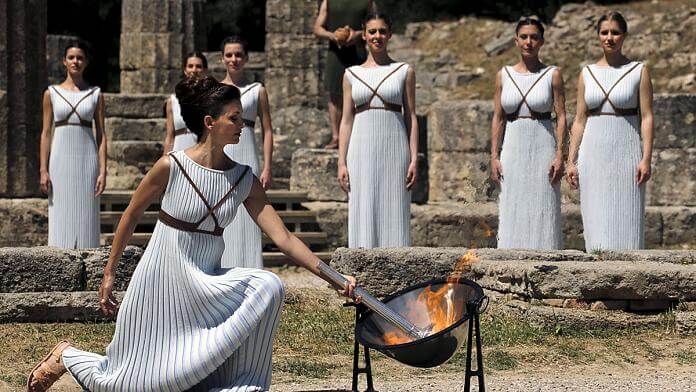
Our trip will start from Athens and we will have a short stop at the Corinth Canal. The Corinth Canal is a canal that connects the Gulf of Corinth with the Saronic Gulf in the Aegean Sea. It cuts through the narrow Isthmus of Corinth and separates the Peloponnese from the Greek mainland, arguably making the peninsula an island.
We will then proceed to Olympia through Central Peloponnese and the Towns of Tripolis and Megalopolis. You will see the remains of the ancient Olympia, the Olympic Stadium, the Sanctuary of God Zeus, the Olympia Archaelogical Museum and the Museum of the Olympic Games.
Delphi
Delphi is famous as the ancient sanctuary that grew rich as the seat of Pythia, the oracle consulted about important decisions throughout the ancient classical world. Moreover, the Greeks considered Delphi the navel (or centre) of the world, as represented by the stone monument known as the Omphalos of Delphi.
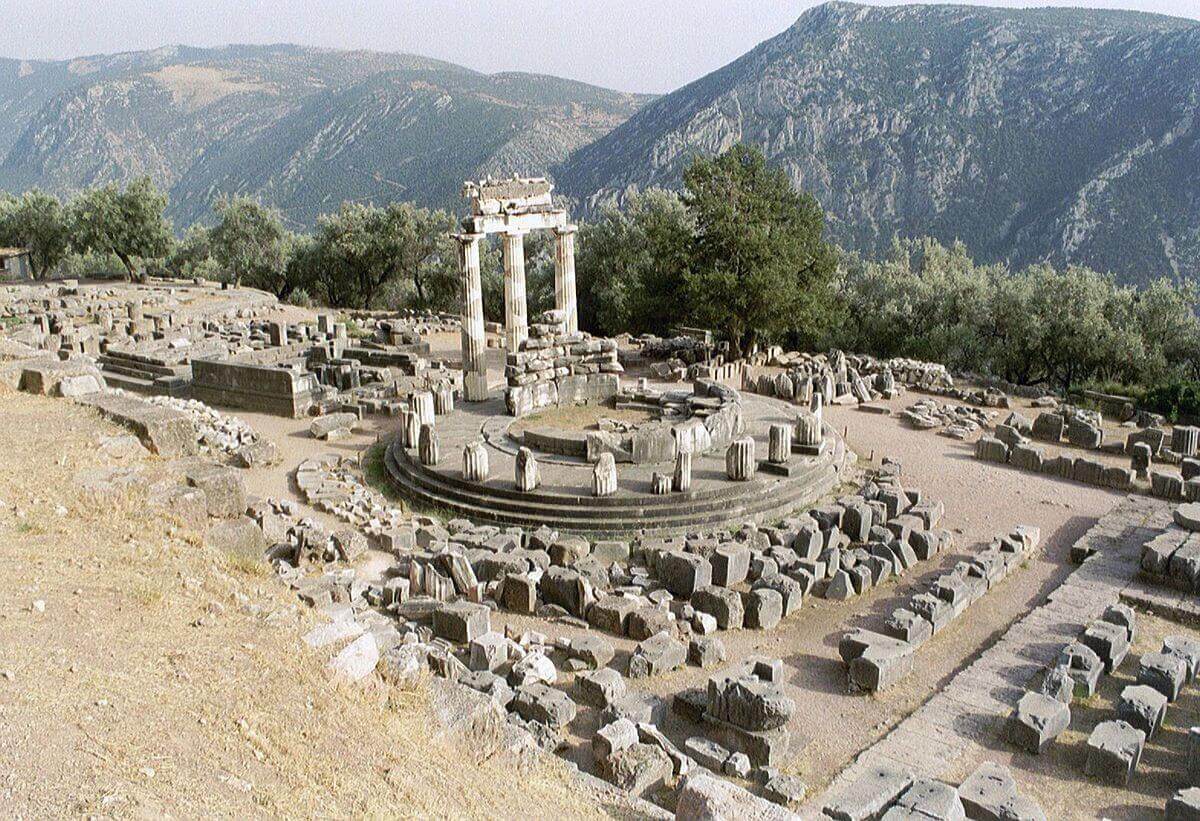 © Arian Zwegers
© Arian Zwegers
It occupies an impressive site on the south-western slope of Mount Parnassus, overlooking the coastal plain to the south and the valley of Phocis. It is now an extensive archaeological site with a modern town of the same name nearby. It is recognised by UNESCO as a World Heritage Site in having had a phenomenal influence in the ancient world, as evidenced by the rich monuments built there by most of the important ancient Greek city-states, demonstrating their fundamental Hellenic unity.
During this full day tour to Delphi, Athens Taxi Travel will get you to the Temple of Apollo, the Delphi Museum, the navel of Earth in Delphi & the Delphi Oracle.
Our tour will pass from Arachova a mountain town famous for its black wine, its “brusque”, the colorful textiles, carpets and rugs, handicrafts and woodcut creations. When you will arrive in Delphi you will visit the Temple of Apollo, The Athenian treasury, The Theater, and also the Stadium. The tour continues with a visit to the Museum where rare findings of the Archaic & Classic periods are displayed.
Meteora
The Meteora is a rock formation in central Greece hosting one of the largest and most precipitously built complexes of Eastern Orthodox monasteries, second in importance only to Mount Athos. The six monasteries are built on immense natural pillars and hill-like rounded boulders that dominate the local area. It is located near the town of Kalambaka at the northwestern edge of the Plain of Thessaly near the Pineios river and Pindus Mountains. Meteora is included on the UNESCO World Heritage List. The name means “lofty”, “elevated”, and is etymologically related to meteor.
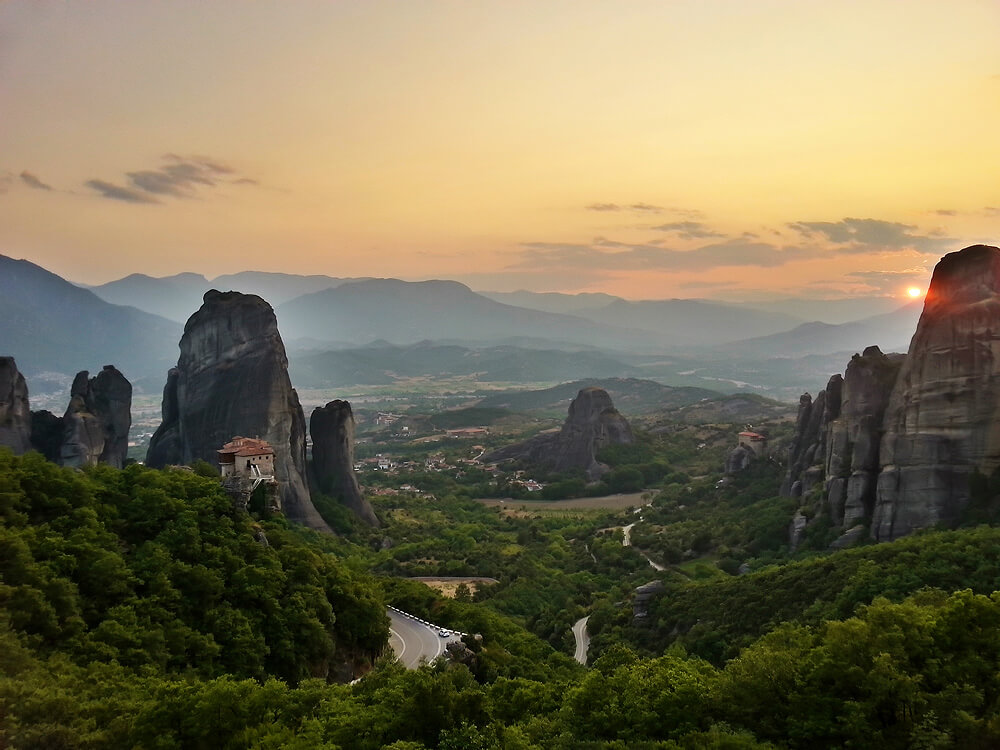 By Ioannis Th. Karageorgos – Own work, CC BY-SA 4.0
By Ioannis Th. Karageorgos – Own work, CC BY-SA 4.0
Monasteries of Meteora
Monastery of Great Meteoron
This is the largest of the monasteries located at Meteora, though in 2015 there were only 3 monks in residence. It was erected in the mid-14th century and was the subject of restoration and embellishment projects in 1483 and 1552. One building serves as the main museum for tourists. The Katholikon (main church), consecrated in honour of the Transfiguration of Jesus was erected in the middle of the 14th century and 1387/88 and decorated in 1483 and 1552.
Monastery of Varlaam
The Monastery of Varlaam is the second largest monastery in the Meteora complex, and in 2015 had the largest number of monks (seven) of the male monasteries. It was built in 1541 and embellished in 1548. A church, dedicated to All Saints, is in the Athonite type (cross-in-square with dome and choirs), with spacious exonarthex (lite) is surrounded by a dome. It was built in 1541/42 and decorated in 1548, while the exonarthex was decorated in 1566. The old refectory is used as a museum while north of the church is the parekklesion of the Three Bishops, built in 1627 and decorated in 1637.
Monastery of Rousanou/St. Barbara
It was founded in the middle of the 16th century and decorated in 1560. Today it is a flourishing nunnery with 13 nuns in residence in 2015.
Monastery of St. Nicholas Anapausas
The monastery was built in the 16th century, has a small church, decorated by the noted Cretan painter Theophanis Strelitzas, in 1527. There was one monk in residence in 2015.
Monastery of St. Stephen
The Monastery of St. Stephen has a small church built in the 16th century and decorated in 1545. This monastery rests on the plain rather than on a cliff. It was shelled by the Nazis during World War II who believed it was harboring insurgents and was abandoned. The monastery was given over to nuns in 1961 and they have reconstructed it into a flourishing nunnery, with 28 nuns in residence in 2015.
Monastery of the Holy Trinity
The Monastery of the Holy Trinity is on top of the cliffs. It was built in 1475 and was remodeled in 1684, 1689, 1692, 1741. There were four monks in residence in 2015.
Thermopylae
Thermopylae is a place in Greece where a narrow coastal passage existed in antiquity. It derives its name from its hot sulphur springs. The Hot Gates is “the place of hot springs” and in Greek mythology it is the cavernous entrances to Hades”.
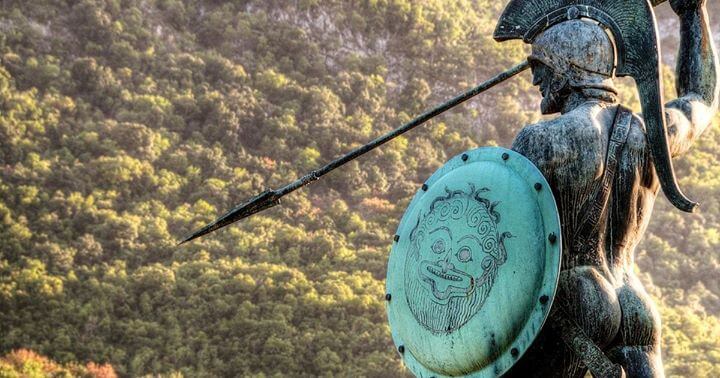
Thermopylae is world-famous for the battle that took place there between the Greek forces (notably the Spartans) and the invading Persian forces, commemorated by Simonides in the famous epitaph, “Go tell the Spartans, stranger passing by, That here obedient to their laws we lie.” Thermopylae is the only land route large enough to bear any significant traffic between Lokris and Thessaly. This passage from north to south along the east coast of the Balkan peninsula requires use of the pass and for this reason Thermopylae has been the site of several battles. A main highway now splits the pass, with a modern-day monument to King Leonidas I of Sparta on the east side of the highway. It is directly across the road from the hill where Simonides of Ceos’s epitaph to the fallen is engraved in stone at the top.
Back to Athens
After Thermopylae our tour ends back at Athens.
More than a taxi tour
Our licensed tourist guide Vicky will enter with you to all monuments and explain everything concerning the monument or the musuem findings you see. Vicky has a degree in Archaeology from the University of Athens and she’s been working as a guide for 35 years now. She speaks English, French and Italian.
We use luxury Mercedes Taxi, legal and licensed by the Greek National Tourism Organization. (License Number 06ΣΞ00261ΣΟ).
Prices are quoted per car & not per person.
If you prefer without tour guide, our English speaking driver can give you all the historic information while you can watch a video about the tour. The driver is not permitted to enter archaeological sites and museums with you, only licensed guides from the ministry of culture are allowed to do so.
Driver will wait maximum 60 minutes after the indicated pick up time, kindly be on time.
Comfortable clothing and athletic walking shoes are recommended.
Hat, sun glasses and sunscreen to protect yourself are suggested.
We recommend you always keep local currency on you (euro), needed for entrance fees and small expenses
Please note that, if you will be choosing the service with a licensed guide, you will require an additional seat in your vehicle, since your guide will be riding with you.
Photography is permitted throughout the tour and in most historical sites unless otherwise mentioned.